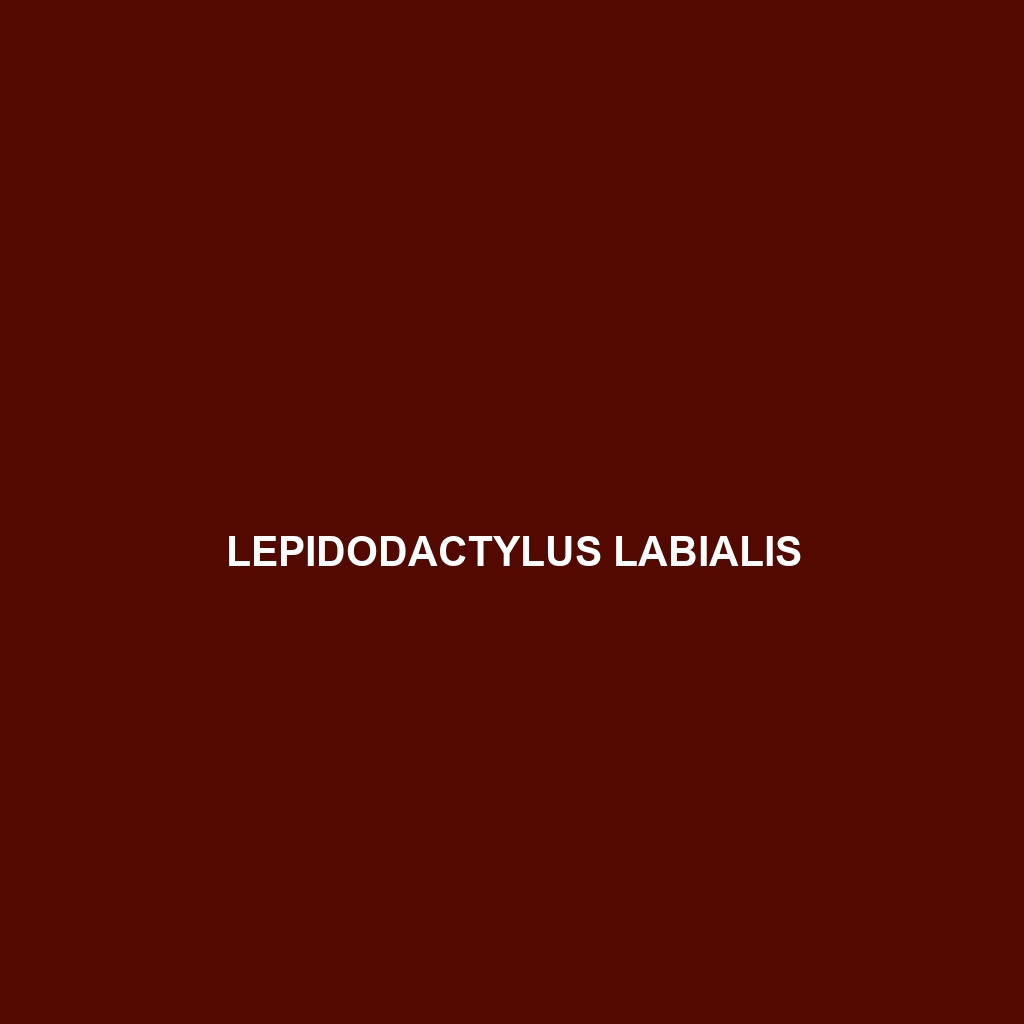Common Name
Lepidodactylus labialis
Scientific Name
Lepidodactylus labialis
Habitat
Lepidodactylus labialis primarily inhabits tropical and subtropical regions, being predominantly found in the lush environments of rainforests and savannas across numerous Pacific islands including those in the Solomon Islands and Vanuatu. These gecko species favor humid, warm habitats that provide ample cover, such as thick foliage, rocky outcrops, and decaying wood. In addition to terrestrial environments, Lepidodactylus labialis is capable of adapting to marine habitats where it seeks shelter in mangroves or along coastal vegetation. Their preference for such diverse climates underscores their adaptability and ecological niche within these ecosystems.
Physical Characteristics
Lepidodactylus labialis showcases distinctive physical traits that contribute to its unique appearance and identification. Adult individuals typically measure around 10 to 15 centimeters in length, characterized by their elongated body and slender limbs. Their skin exhibits a variety of colors, ranging from light brown to dark grey, often adorned with intricate patterns of spots and stripes which aid in camouflage against predators. One notable feature is their large, expressive eyes that enhance their night vision, allowing them to thrive in nocturnal environments. These geckos possess specialized adhesive toe pads, enabling them to climb and navigate their arboreal habitats with ease, further enhancing their survival skills.
Behavior
The behaviors exhibited by Lepidodactylus labialis are fascinating and diverse. Primarily nocturnal, these geckos emerge during the night to forage for food, engage in social interactions, and carry out mating rituals. During mating season, males can be observed engaging in elaborate displays to attract females, which may include vocalizations and specific posturing. Social interactions often involve territorial behaviors, with males asserting dominance over chosen areas. This species is also known for its unique ability to regenerate lost tails, a remarkable adaptation that aids in survival against predators. These behavioral traits not only highlight the adaptability of Lepidodactylus labialis but also contribute to their evolutionary success in varying environments.
Diet
Lepidodactylus labialis is classified as an insectivore, primarily feeding on a diverse array of insects and arthropods. Their diet typically includes crickets, beetles, and other small invertebrates, which they capture using their quick reflexes and agile movements. Occasionally, they may consume plant matter, leading them to be somewhat omnivorous in their dietary habits. Feeding usually occurs during the night, exploiting their nocturnal behavior to hunt effectively and reduce competition with diurnal species. Their role as insectivores helps maintain the balance within their ecosystems by controlling insect populations.
Reproduction
The reproductive cycle of Lepidodactylus labialis is marked by specific seasonal patterns. Mating typically occurs during the warm, wet months when environmental conditions are most favorable. After mating, females lay a clutch of eggs, usually ranging from two to three, in sheltered locations such as leaf litter or crevices in trees. The incubation period lasts approximately six to eight weeks, after which hatchlings emerge fully formed and ready to fend for themselves. Parental care is minimal, with hatchlings being independent from birth. This reproductive strategy allows for a higher survival rate in the competitive environments they inhabit, ensuring the continuity of their populations.
Conservation Status
The conservation status of Lepidodactylus labialis is currently listed as least concern by the International Union for Conservation of Nature (IUCN). However, their populations face potential threats from habitat loss due to deforestation, urbanization, and climate change. Conservation efforts are needed to monitor their populations and habitats, ensuring that Lepidodactylus labialis continues to thrive in its natural environments. Active preservation of rainforest ecosystems and legal protections against habitat destruction are vital for safeguarding this unique species.
Interesting Facts
Among the intriguing aspects of Lepidodactylus labialis is its ability to mimic the appearance of more toxic species, a tactic that offers protection against predators. Additionally, these geckos can exhibit fascinating color changes depending on their environment and emotional state. Their regenerative capabilities are also notable, as the loss of a tail is not seen as a detriment but rather as an adaptive feature that serves to distract predators whilst they escape.
Role in Ecosystem
Lepidodactylus labialis plays a critical role in maintaining the health of their ecosystems. As an insectivore, they contribute to controlling insect populations, thus preventing overpopulation of harmful pests. Furthermore, their activities facilitate nutrient cycling within their habitats. As prey for larger animals, they serve as an essential link in the food web, supporting biodiversity. By helping to keep their environment balanced, Lepidodactylus labialis illustrates the importance of every species within an ecosystem and underlines the necessity of conservation efforts to protect these natural habitats.
